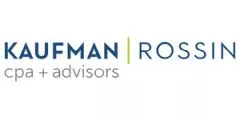- within Technology topic(s)
- in United States
- with readers working within the Retail & Leisure industries
- within Accounting and Audit, Government and Public Sector topic(s)
- with Finance and Tax Executives
The widespread adoption of software-as-a-service (SaaS) has transformed business operations while also introducing new layers of security complexity.
Traditional questionnaires often overlook key matters: identity boundaries, app-to-app connections, and configuration drift. Most existing third-party risk management processes often focus on a vendor's overall organizational controls, overlooking the security features of the SaaS products themselves. This has left many companies vulnerable to misconfigurations, inconsistent access controls, and fragmented incident response.
The Cloud Security Alliance (CSA) has introduced the SaaS Security Capability Framework (SSCF) v1.0, a global benchmark designed to help organizations evaluate and improve their SaaS security maturity. The framework addresses the gap between organizational assessments and product-level security by defining standardized capabilities that SaaS applications should offer and customers should expect.
What the framework includes
The SSCF provides a maturity model structured across six core security domains, each with defined controls that organizations can implement and assess. These domains serve as the foundation for benchmarking and enhancing SaaS security practices:
- Change Control and Configuration Management
- Data Security and Privacy Lifecycle Management
- Identity and Access Management
- Interoperability and Portability
- Logging and Monitoring
- Security Incident Management, E-Discovery, and Cloud Forensics
Each domain includes baseline controls designed to be actionable and scalable across startups and enterprises alike. The framework is intended to complement, not replace, broader standards like SOC 2 and ISO 27001 by offering a more granular look at the security features of SaaS applications.
Putting the framework into practice with confidence
Kaufman Rossin helps organizations evaluate, align, and advance their SaaS security posture using the SSCF as a practical framework. Our team works with technology leaders, security and compliance professionals and vendor risk stakeholders to:
- Assess current SaaS security controls against SSCF standards
- Pinpoint where security features are missing or need improvement
- Develop implementation roadmaps tailored to strengthen controls and reduce risk
- Integrate SSCF requirements into vendor onboarding and third-party risk management processes
This support is especially valuable for fintech companies, where demonstrating strong SaaS security controls is critical to building trust, supporting compliance, and accelerating enterprise adoption. Whether you're scaling a secure platform or reviewing your SaaS portfolio, we can help turn SSCF guidance into meaningful action.
Contact a member of Kaufman Rossin's Risk Advisory Services team to learn more about the SaaS Security Capability Framework and how we can help your organization assess and advance its SaaS security posture.
The content of this article is intended to provide a general guide to the subject matter. Specialist advice should be sought about your specific circumstances.


